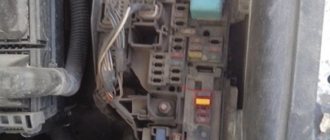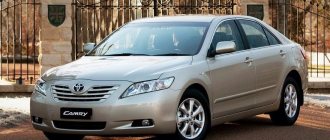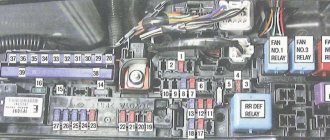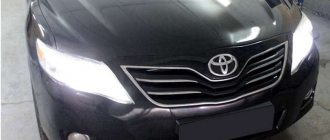The Toyota Camry sedan is one of the top sellers on the Russian market. Since its introduction in 1982, this model has gone through several iterations, maintaining its exceptional features, reliability and comfort. Car production plants have been opened in several countries. Knowing where Camry is assembled and what quality is considered the best, you can plan the purchase of a vehicle.
About Toyota
The history of the company began at the end of the 19th century. with the invention of a weaving loom supplemented by an electric motor by its founder Sakichi Toyoda. A factory was created for mass assembly of units - this is how the Toyoda brand was born. The automobile company was created by Sakichi's son a third of a century after the start of the weaving loom manufactory.
Initially, Kiichiro Toyoda was engaged in the development and production of internal combustion engines. Using the developments of competitors, in 1930 he presented his version of the motor. At his father's company, he opened a workshop where engines were produced and equipment was assembled. The first cars - G1 (truck) and A1 (passenger car) - were introduced in 1936.
In 1938, the vehicle manufacturing plant was renamed Toyota. The production of the first SA civilian vehicles began in 1947. They were called Toypets due to their compact dimensions. A special year for the company was 1966, when the Corolla model was introduced to the world. The compact and economical sedan has gained recognition in the North American market.
Having overcome economic problems and united branded enterprises into a single concern, in the early 1980s. the company launched production of Camry. The name of the car, which became the flagship, is translated into Russian as “crown”. By 2021, 9 generations of the sedan have been produced.
In total, during its operation, the concern produced more than 200 models. Among them are Lexus, RAV4, Prius, Highlander, Land Cruiser. Cenrtuiry Royal cars are produced in limited quantities for the Emperor of Japan.
Countries of the world where Toyota Camry is produced
The engineers of the Japanese automaker have achieved the optimal combination of design, price and technical characteristics of the Camry. The car assembly process is organized at 6 factories in 5 countries around the world. They are equipped with modern equipment that guarantees high quality products.
List of producing countries:
- Japan. Production workshops are located in Aichi Prefecture (on Honshu Island). Cars are supplied to the markets of Asia and Europe.
- USA. The model production line was launched at factories in Kentucky and Indiana. It covers the needs of the North American continent.
- Australia. The premium sedan has been assembled in the city of Alton since 2009. Products are supplied to New Zealand and East Asia.
- Russia. The assembly plant operates in the Leningrad region.
- China. GAC Toyota Motor Co. Plant produces cars for the needs of residents of the state.
Differences in builds from different countries
At Japanese and foreign enterprises, vehicles can only be assembled according to a single corporate standard. Toyota supplies engines and main components independently. Each state has its own manufacturers of tires, paint and varnish, glass, and seat padding. This has virtually no effect on the final build quality.
Camry enters the European, Asian and North American markets in different configurations. The mandatory minimum for Europe is ABS, cruise control, 2 airbags, fog lights, rear disc brakes. It is possible to install additional options, including a sunroof, leather interior, side airbags, etc. In America, the European minimum comes in a more expensive configuration.
There are also differences in the appearance of the cars. Japanese-made cars are the most elegant. There are chrome moldings along the length of the body, and fog lights are installed. American-market sedans have neither. Camrys produced in Australia for the UAE can come with or without moldings; fog lights are not installed on them.
American models have hybrid engines, but other manufacturers do not.
Disadvantages of 40 in favor of 50
When comparing Camry 40 and 50, you can notice the following advantages of Camry 50:
- The interior is made of higher quality materials.
- Good sound insulation of doors. As a result, they close with a pleasant, soft sound.
- Availability of adaptive light. This function allows you to improve visibility at night by turning the lenses behind the wheel.
- Dynamic layout of the rear view camera. Makes it much easier to measure the distance to an obstacle when reversing.
- A large number of installed servos. This significantly increases the comfort of using the car.
- More functional climate control.
- The front and rear doors are equipped with more convenient cup holders.
Ways to determine the car manufacturer
You can determine in which country the Camry modification was assembled in a few minutes. To do this, you should refer to the technical content of the car. The automaker supplies the main components and assemblies, body hardware to each enterprise from Japan. Based on them, models are assembled.
There are parts that are produced in the Russian Federation, so their markings differ from the original ones.
Elements by which the manufacturer can be identified include:
- Tires. Japanese-assembled vehicles are equipped with samples manufactured at the Yokohama plant. Russian cars are equipped with Michelin tires produced by the Moscow branch of the company.
- Passenger seats. The design, shade and quality of materials used in the manufacture of Camry car seats in different countries do not differ. However, interior elements are produced at the expense of Russian enterprises.
- Glazing. Glass for Russian Camrys is produced at the Bor Glass Factory. They differ from Japanese ones in markings.
In order to accurately determine the country, you should check the VIN code. For bodies produced in Russia, the marking begins with the letter “X”.
Japanese models are assigned the symbol "J". Another method is to check that the vehicle has an eyelet to secure the safety cable. The element is provided only in modifications that are assembled in Japan.
Russian plant Toyota Motor Manufacturing, Russia
The Toyota Camry and RAV4 assembly plant was built in 2015-2017. A territory was allocated for him in the industrial village of Shushary (in the Pushkinsky district of St. Petersburg). The official opening of the enterprise took place on December 21, 2007, and on the same day the first car rolled off the assembly line.
The company operates in 2 shifts. Its employees regularly improve their skills and visit foreign enterprises to exchange experience. The sales market covers Russian regions, Kazakhstan, and Belarus.
Chassis
The suspension as a whole is quite durable. Replacement of bushings and stabilizer struts will be needed after 80 - 100 thousand km.
Factory shock absorbers last more than 150,000 km. Ball joints and silent blocks in levers will last no less.
The steering rack may begin to leak or knock after 200,000 km. For its repair they will ask for 11-15 thousand rubles. The original unit will cost a fabulous 111,000 rubles, the analogue is much cheaper - 16,000 rubles.
Toyota Camry VI (2009 -2011)
A knock in the steering can be caused by play in the spline joint (treated with special lubricant) or wear of the steering cardan crosspieces (4-12 thousand rubles).
Front wheel bearings travel over 200-250 thousand km. They change separately: 1-3 thousand rubles plus 1000 rubles for work.
Front brake discs (6-8 thousand rubles) can lead already at 30 - 40 thousand km. Those who are lucky roll back 70 - 90 thousand km. Rear brake discs last over 100,000 km. The front brake pads (3-8 thousand rubles) remain in use for 50-80 thousand km, and the rear brake pads (2-3 thousand rubles) for 80-120 thousand km.
How high quality is Russian assembly?
The Shushary plant produces Camry models in compliance with Toyota technical standards. Russian assembly of Camry is cheaper, but remains at the same high level as in Japan. The workers of this workshop have new technologies and equipment for multi-stage quality control.
Tests show that engines supplied from overseas are as reliable as those found in Japanese cars. Other mechanisms and components do not fail during checks. If manufacturing defects are detected, the vehicle is not allowed for sale.
Owners of Russian cars note the poor quality of the body covering and seat padding in the cabin. There are complaints about mediocre sound insulation and a tendency to corrosion of chassis elements.
Whose production is better
You can check the capabilities of Camrys assembled in Russia and abroad using a test drive. Cars are produced to the same standards, so there should be no difference in the handling and technical capabilities of the same modification.
Testing allows you to notice:
- The difference in car windows. On Japanese models, raindrops practically do not linger. They are marked in white. Russian glass covers dirt and drops more evenly, and the road through them is not clearly visible. They are marked in black.
- Difference in headlight adjustment. It is present in the RF assembly; in the Japanese model this function is automated.
- Various configurations. The domestic assembly is equipped with a Varta battery. The Japanese one has Panasonic installed.
The difference in the equipment of the machines is superficial, and the country of their assembly does not affect the quality. A test drive confirms that the cars demonstrate the same maneuverability, dynamics, and good handling. There were no differences between the sedans in driving and braking.
Opinion of car owners
Boris, 42 years old, Yekaterinburg: “Since 2014, I have owned a sedan imported from Japan. There are no complaints about the controls or the technical component; the dealer had no problems with spare parts either. However, the seats in the cabin quickly lost their appearance. This is where Toyota saved money.”
Ivan, 50 years old, Petro.
Alexey, 30 years old, Orel: “I’ve been driving a Shushar-assembled Camry for almost 5 years. Technically the car is reliable, but there were some minor repairs. Plus, the original paintwork had to be replaced: the paint was soft, and scratches immediately appeared on the body. This is a significant flaw, and the creaky interior had to be improved.”
Build quality
According to the majority of potential buyers and owners of Japanese cars, the domestic assembly of Toyota Camry is not as high quality as that of cars from Japan. And, if we look at these machines in more detail, we can draw the following conclusions:
- Japanese Camrys are fitted with Yocohama tires at the factory, while Russian Camrys are fitted with Michelin tires;
- the quality of the paintwork and finishing materials of the Russian versions is worse - although not by much;
- all glass on Russian versions is also made in Russia;
- at the same time, all engines for any car, both Russian and Japanese, are made in Japan - power units are not produced at domestic enterprises.
According to experts, there is no difference between most of the main Camry parts from the Russian Federation and Japan. All components used for assembly are just as reliable, despite the fact that about 75% of Russian motorists are not sure about this.
That is why many try to choose the Japanese version, especially since the manufacturer sells it at the same price as the assembly from St. Petersburg. The decision on such pricing was made even when the plant was opened in St. Petersburg.
Despite the fact that Camrys from the USA are almost never found either in Russia or Ukraine (only on the secondary market), it is worth noting that local assembly is also considered to be of high quality and reliable. And in 2009-2012, American Camrys even topped the reliability rating among all cars assembled in the United States.
(
1 ratings, average: 5.00 out of 5)
About acquisition in different regions of Russia
The domestic plant sets favorable prices for new Camry cars throughout the country. The final cost depends not only on the configuration, but also on the region of purchase. In 2021, it ranged from 700 thousand to 2 million rubles. Delivery to the desired city is paid separately.
Important points before purchasing
You can purchase a new Camry at one of the dealerships. Buyers have their own approaches and priorities when choosing.
However, the basic recommendations for them are the same:
- check the quality of paintwork and equipment;
- make sure that the basic functions of the car are working properly;
- look under the hood, check the hoses;
- familiarize yourself with a copy of the customs declaration, the date of customs clearance and issuance of the PTS;
- start and listen to the engine;
- check the operation of the gearbox;
- take a test ride.
The acceptance certificate should be signed when you plan to pick up the vehicle. If it is necessary to install additional equipment, you should initially complete all the work in the service, and then sign the documents after checking.
Advantages of Camry 40 over Camry 50
To determine which version of Camry is better, you should take into account the following advantages of the 40:
- The suspension better tolerates uneven road surfaces. On the Camry 50, strong impacts to the body are much more common, and when driving on asphalt with many cracks, an unpleasant rattling sound is transmitted into the interior.
- Information content of the steering wheel. The newer Camry doesn't allow the driver to have full steering feel at speed.
- Reliability of paintwork. On 50s, it is not uncommon for cracks and scratches to appear after a couple of years of use.
- Despite the fact that the dimensions of the trunks are almost the same, many car owners note that in the 40 it is the most convenient.
- The 40's sound insulation is much better, with the exception of the doors.
Features of this year's car
To launch production of the latest modification of the sedan, the plant located in the Leningrad region was refurbished. The level of workshop automation increased from 32% to 50%, 96 new robots were added. The premises house the assembly of Toyota Camry, the production of body panels and the assembly line for installing independent suspension. The automaker's investments in modernization exceeded 3.9 billion rubles.
The new Camry is based on the GA-K platform with a low center of gravity, which made it possible to develop a sporty body profile. Torsion bar mechanisms in the rear suspension design have given way to coil springs. This helped to increase the height of the trunk and had a positive effect on visibility from the driver's seat.
The power structure of the body is built on the basis of a high-strength steel frame. Due to the design features, the rigidity of the body has increased by 30% compared to the previous modification. Together with the lowered center of gravity, increased wheelbase and vehicle width, this has a positive effect on the vehicle’s handling and stability.
On the Russian market, the new sedan is presented with 3 types of engines:
- 2 atmospheric power 150 and 180 hp. s., which work together with a 6-speed automatic transmission and provide acceleration of up to 210 km/h;
- petrol V6 249 liters. s., compatible with an 8-speed automatic transmission and capable of reaching speeds of up to 220 km/h.
The cost of the basic configuration in the showrooms of official dealers is from RUB 1,599,000. It includes the ERA-GLONASS system, side airbags and curtain airbags, heated front seats, and exchange rate stability system. The maximum modification includes electronic collision warning systems and a multimedia system.
The modern Toyota Camry is a triumph of engineering and premium comfort. Modular architecture, smooth body lines, good maneuverability, and road assistance systems allow the car to be considered a benchmark among business-class sedans.
Transmission
Four-cylinder engines were paired with a 5-speed manual transmission or a 5-speed automatic transmission (U250E), and the top-end V6 was paired with a 6-speed automatic transmission (U660E).
The mechanical clutch lasts for over 150-200 thousand km. The cost of updating it will be about 18,000 rubles.
Cases of repair of a 5-speed automatic are few.
The 6-speed automatic is also quite reliable. Troubles usually occur among those who like to “get excited.” A contract box can be purchased for 70-130 thousand rubles. The repair will cost 100-150 thousand rubles.
After 200-250 thousand km it is necessary to update the CV joints. The internal one is available for 5,000 rubles, and replacement work is estimated at 3,500 rubles.











